Why you can trust Tom’s Hardware
Our expert reviewers spend hours testing and comparing products and services so you can choose the best for you. Find out more about how we test.
German case, cooling, and peripheral maker Cougar was once known for having orange accents on many of its products. And that design element continues with its latest case to land on our test bench, the somewhat oddly named Airface Eco. The top ports are orange, and you could, of course, choose that color for the four included fans, as Cougar has done in many of the marketing images for this case. The Eco also sports a number of features that set it apart in other ways, like four-slot GPUs in vertical orientation, a modular IO panel, easily removed dust filters, and a distinctive front face full of large circular holes.
Will Cougar’s Airface Eco make our list of best PC cases? To find out, we’ll take a look at the specifications and features of the case, then we’ll go over the features and wrap up our review with thermal testing.
Product Specifications
Motherboard Support | ATX, Micro ATX, Mini ITX, CEB, E-ATX |
Color | Black or white |
Type | Mid-tower |
Case Dimensions (D x W x H) | 480 x 240 x 509 mm / 18.9 x 9.4 x 20 inches |
2.5-inch Drive Support | 2x 2.5-inch drives supported |
3.5-inch Drive Support | 2x 3.5-inch drives supported |
PCI-E Expansion Slots | 7 |
Fan Support | Up to 7 |
Pre-Installed fans | 2x 180mm intake fans, 1x 120mm exhaust fan |
CPU Cooler Clearance | 190mm |
GPU Clearance | 390mm |
Vertical GPU Support | Yes |
PSU Length | Up to 200 mm |
Radiator Support | 360 mm supported on top or front |
MSRP | $109.99 US |
Other features | Graphics card holder, Modular IO panel |
Features of Cougar’s Airface Eco computer case
▶ Coned vent front side
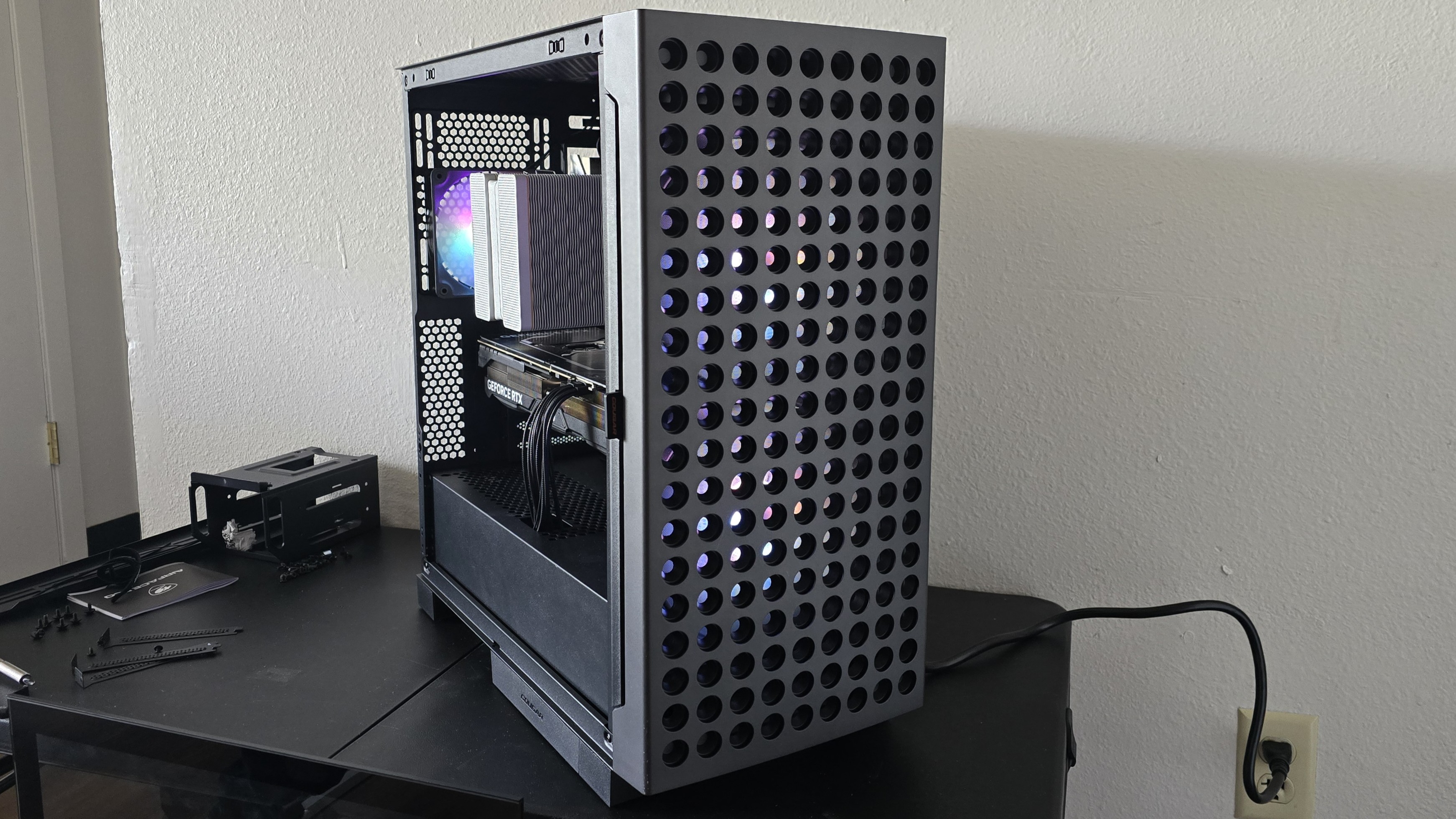
The first thing that caught my eye when I set up this case was its front, which incorporates coned vents, behind which are two 180mm ARGB fans. Cougar claims this design helps increase the airflow pressure of the case.
▶ Side view, simple GPU holder bracket
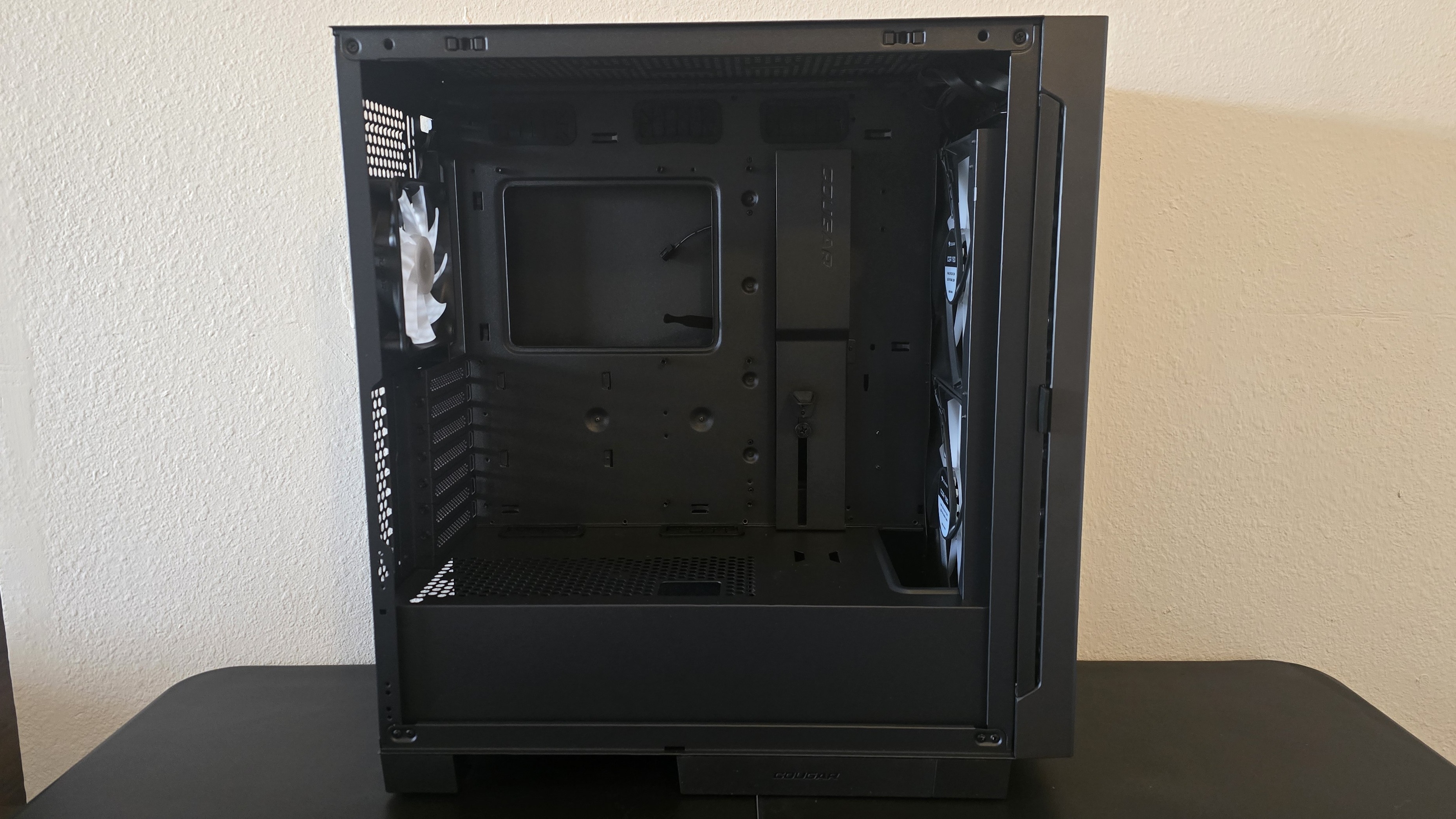
Looking inside the case, the configuration seems fairly standard, although there are a couple of unique choices to point out.
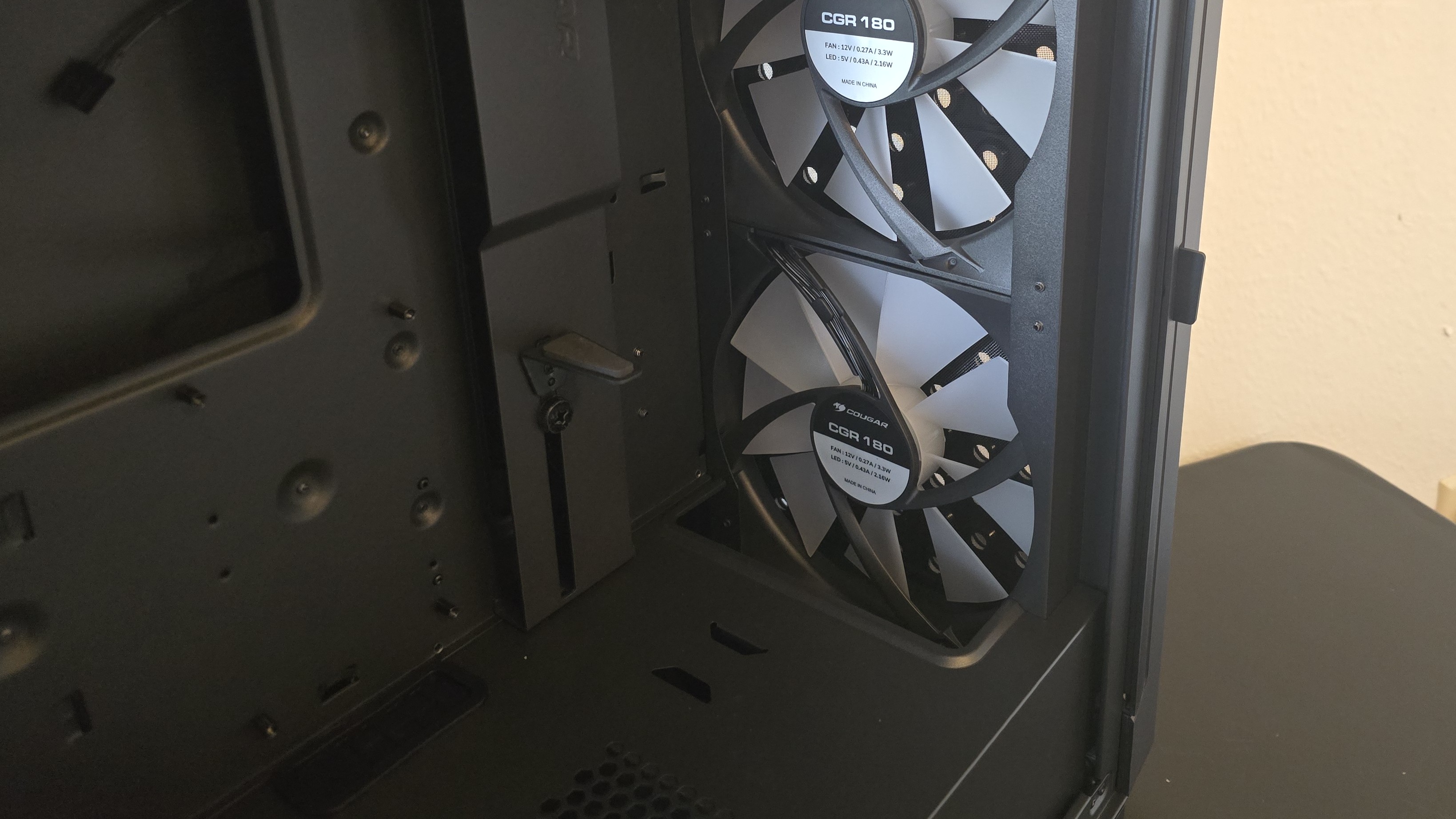
Built into the cable routing plate is a simple GPU holder. But don’t misunderstand my description of “simple” as a bad thing. This GPU support does the job and is very easy to adjust. I much prefer this design of GPU holder compared to more complicated versions that some competitors offer in their cases.
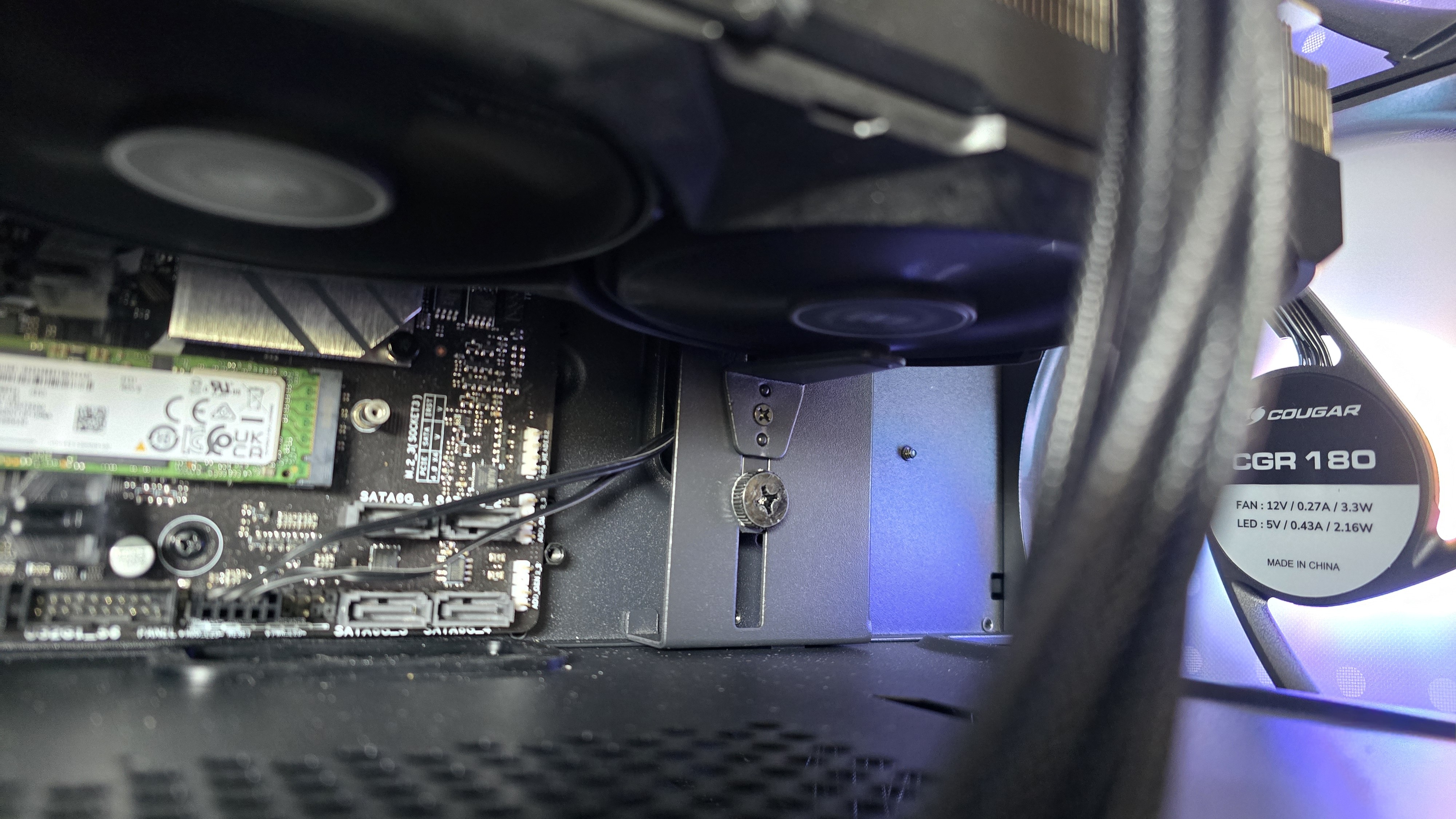
There’s also a handy routing hole for GPU power cords in the PSU shroud. Some users may find this cable management style cleaner and better-looking, or at least easier. But if you don’t like that option, you can always route the cable through the traditional routing bracket on the motherboard tray.
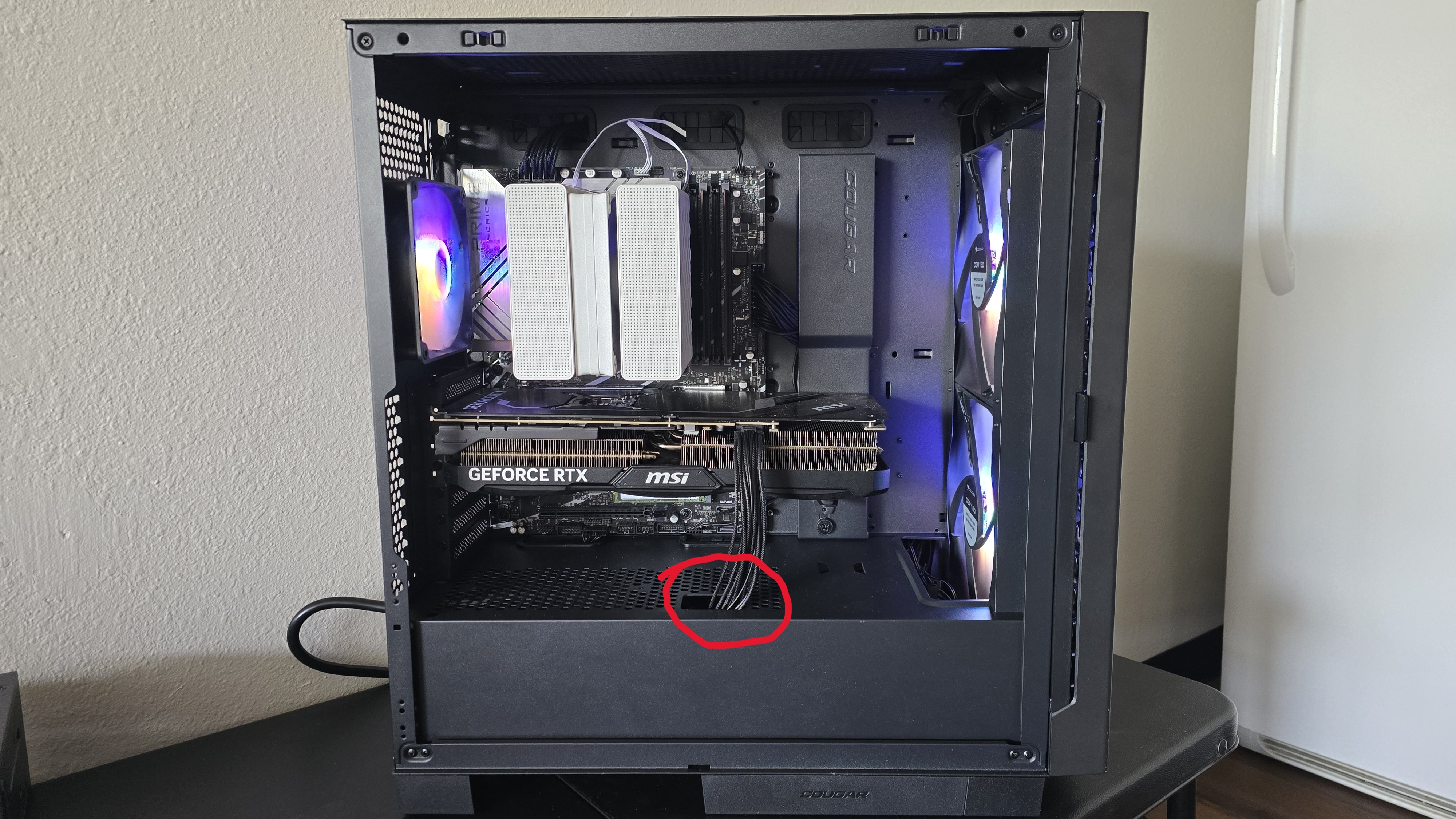
▶ Build quality
The build quality appears to be good, with no obvious weaknesses or easily bent parts.
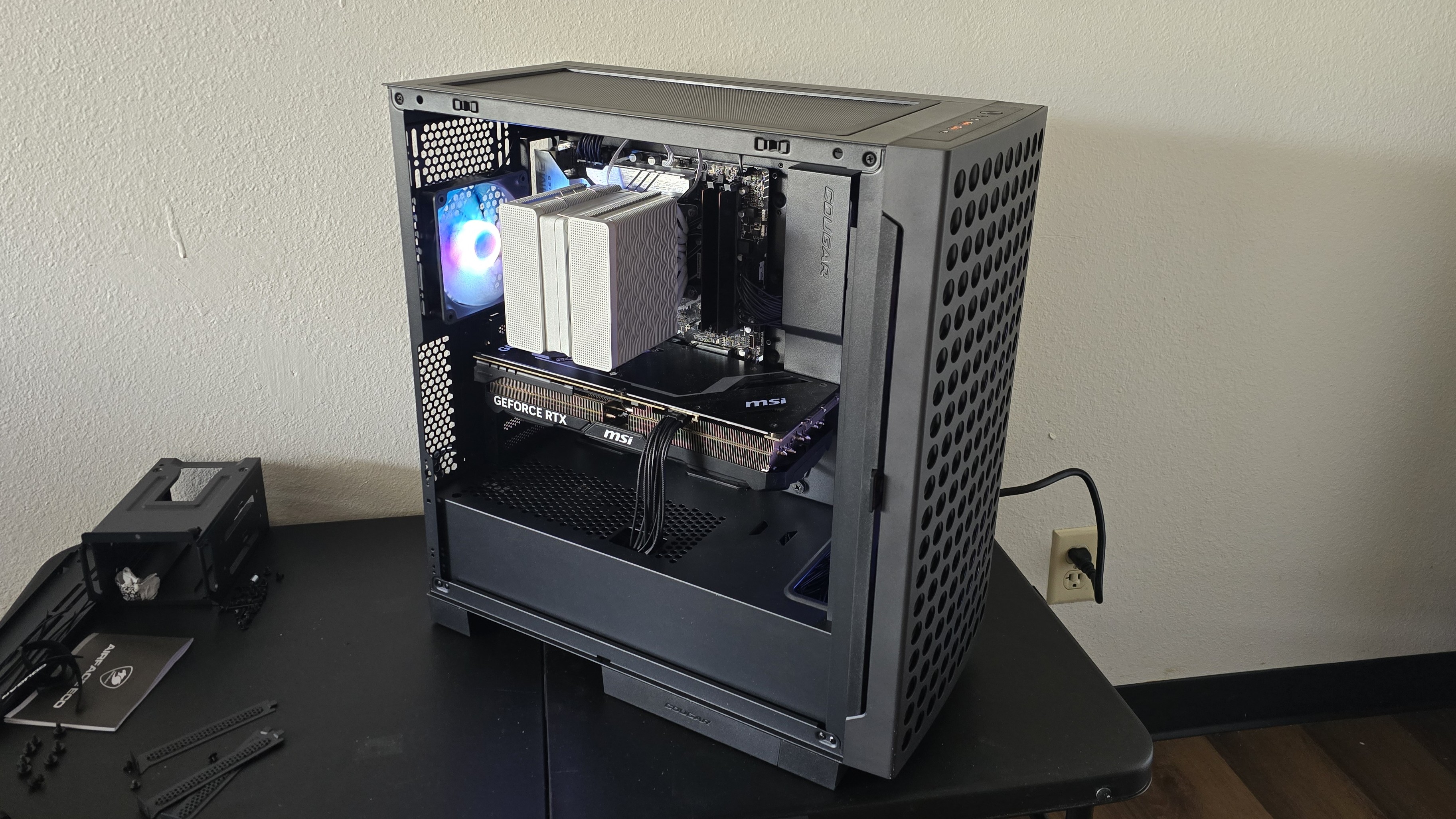
▶ Modular IO panel
The IO panel is located on the front of the top of the case by default, and harkens back to Cougar’s early days with two orange-colored USB-A ports. There’s also a USB-C port, audio jack, ARGB lighting control button, and power button.
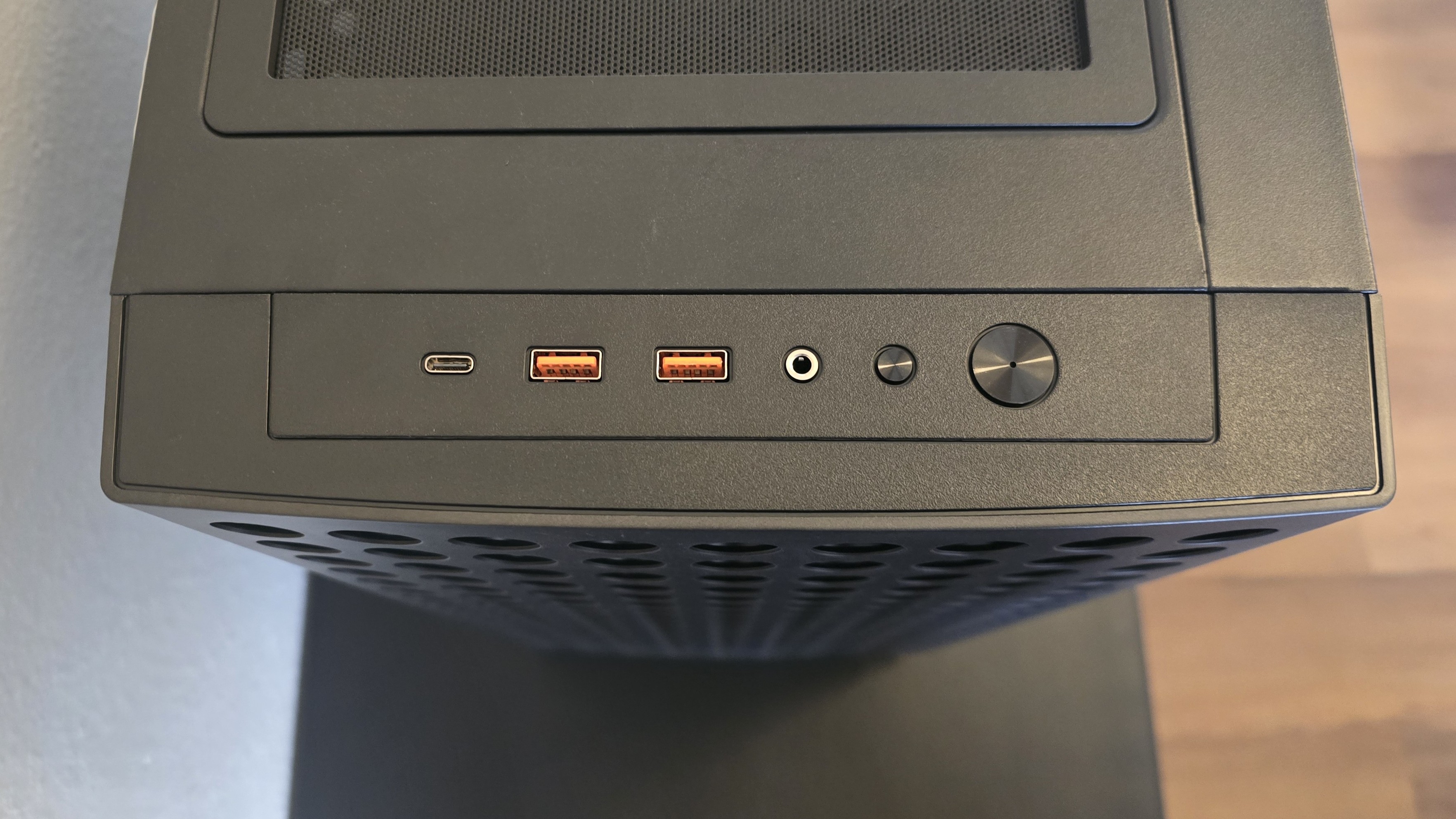
Cougar describes the IO panel as “modular.” I’m not sure if I approve of this use of the word modular, as I view “modular” components as those that can be easily swapped and replaced with an alternative.
What Cougar means by“modular” is that the position of the IO panel can be adjusted. You can leave it at the top of the case, a or you can move it down to the bottom side of the case, which should be more convenient if you’re keeping this case on your desk.
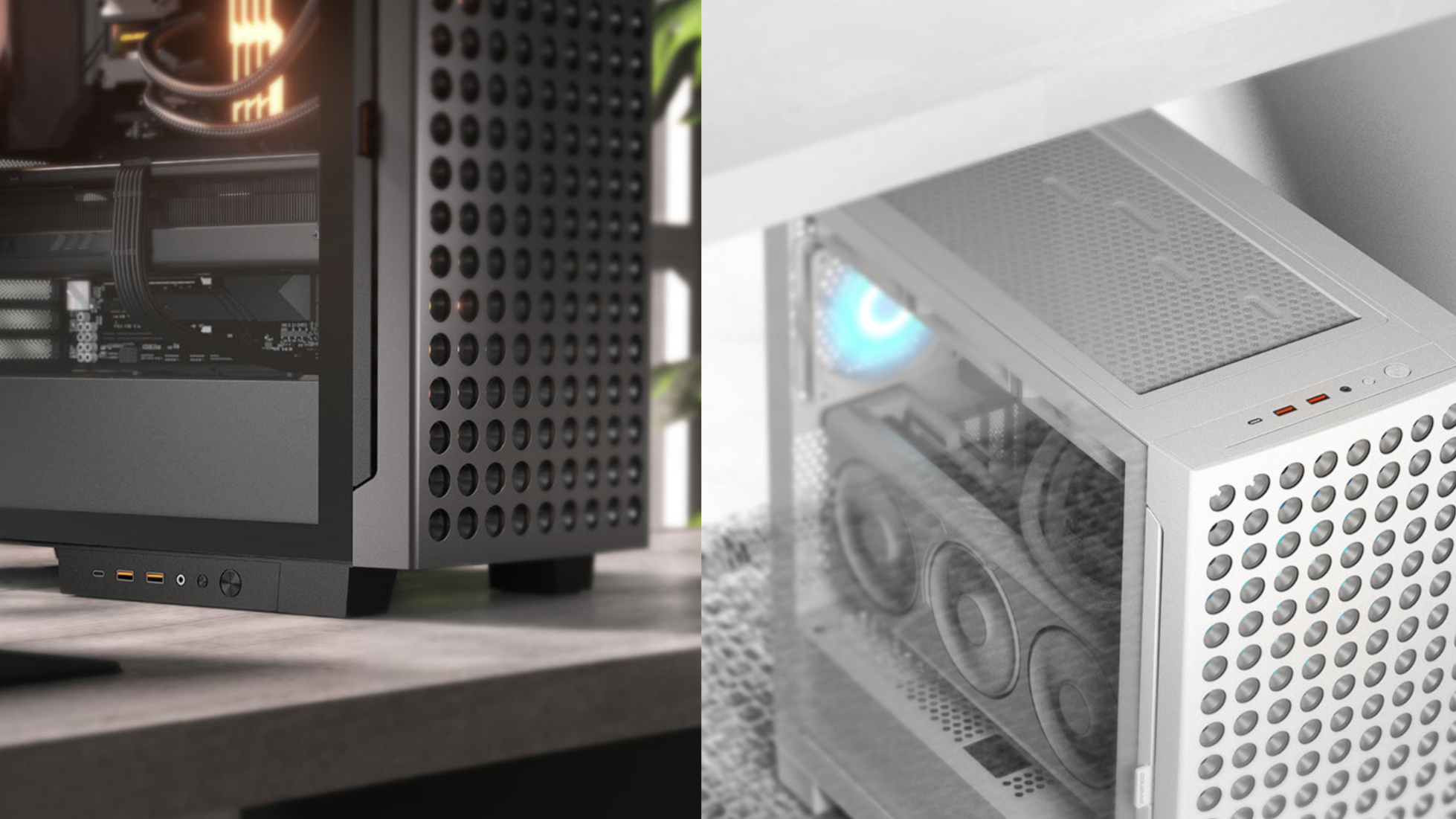
▶ Dust filters, bottom view
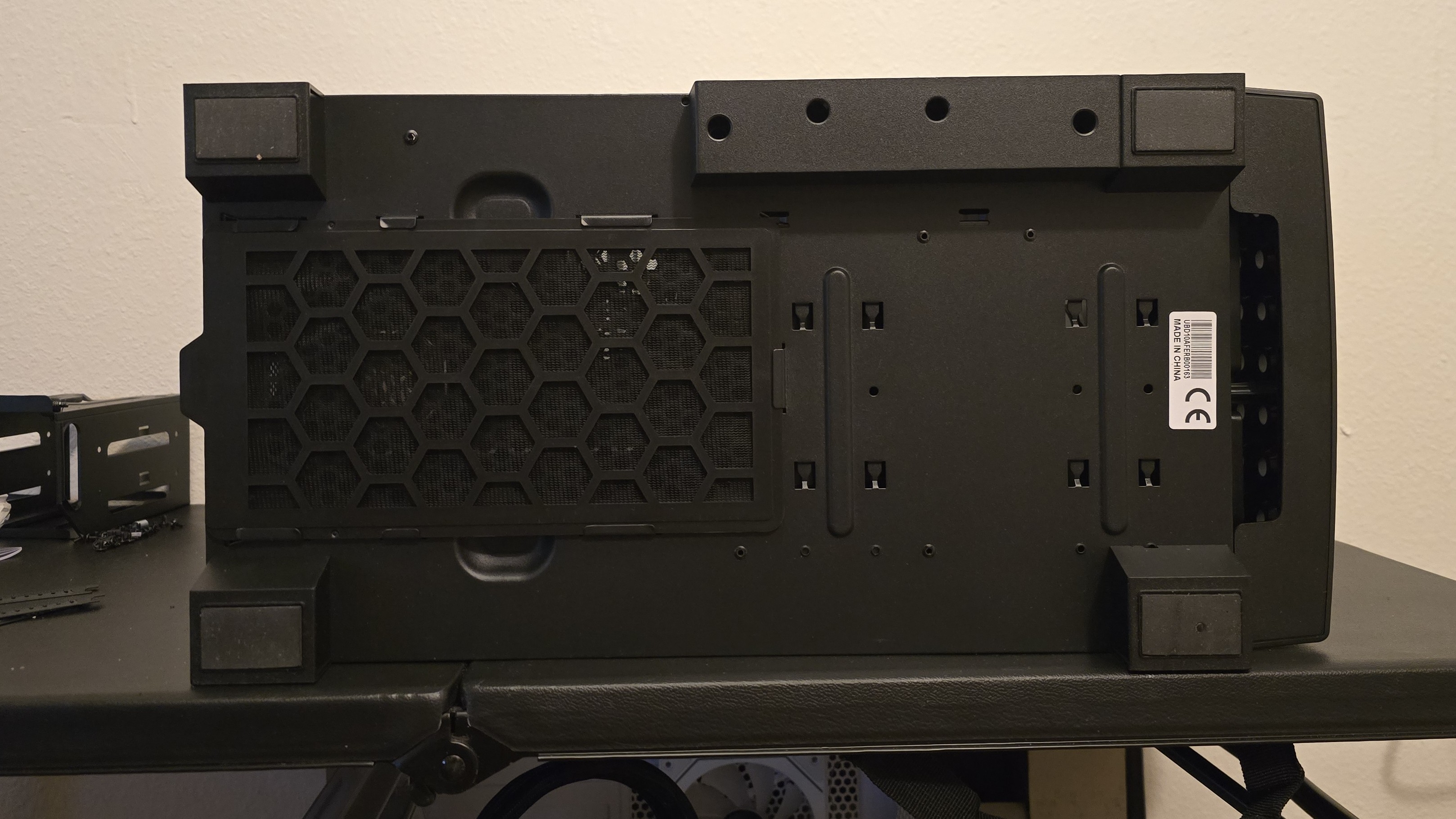
The bottom of the case has four rubber feet and a spot where the IO panel can be moved to. There’s an easy-to-remove dust filter on the bottom, which slides out from the back.
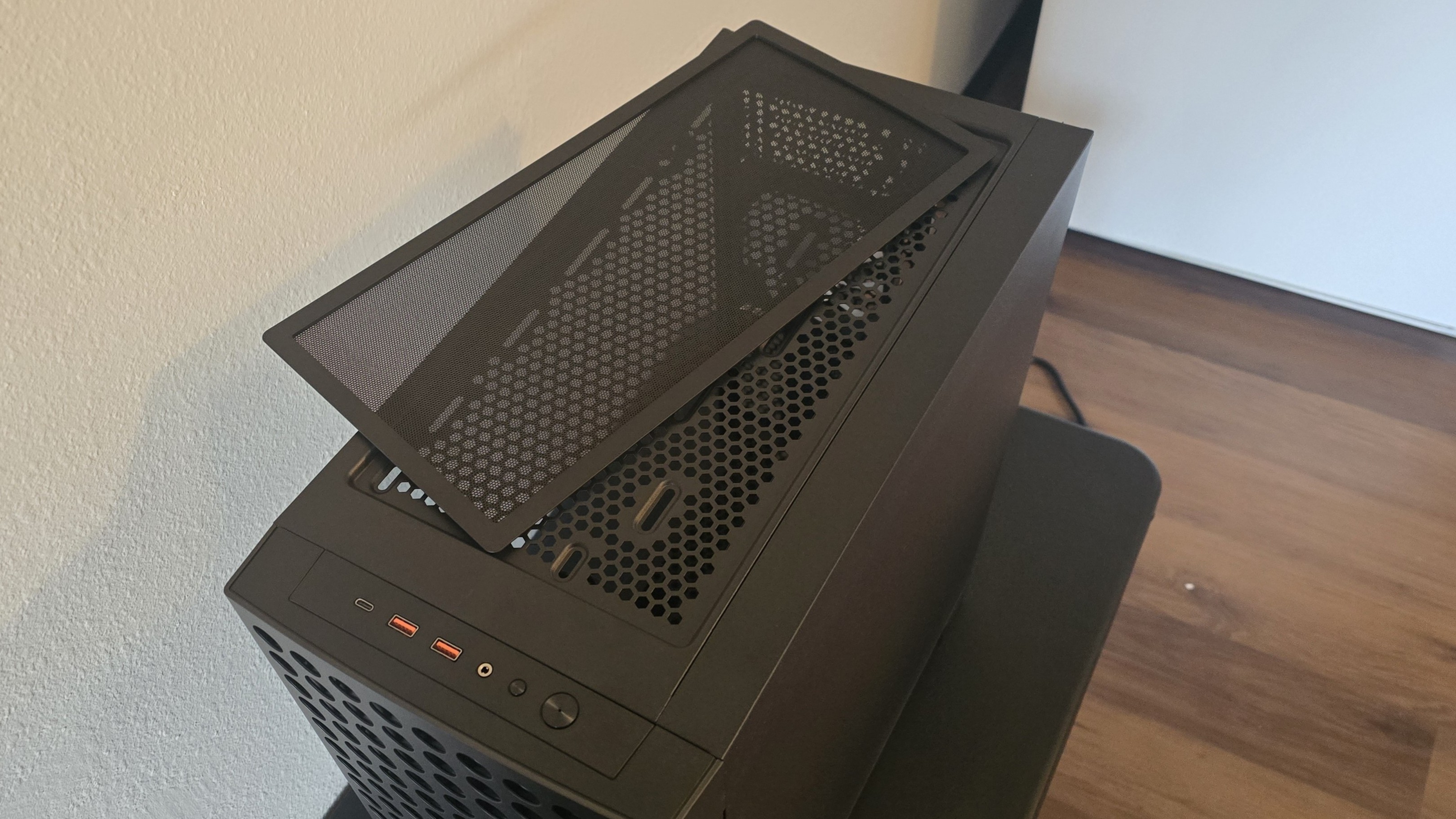
There’s another easily removable filter on the top of the case, but what really stands out is how Cougar designed the front dust filter. Most front dust filters require a bit of case deconstruction, but that’s not the case with the Airface Eco! The filter on the front pulls out from the side using a pull tab, making it easy to to remove and clean.

▶ Rear side view, storage, and cable management features
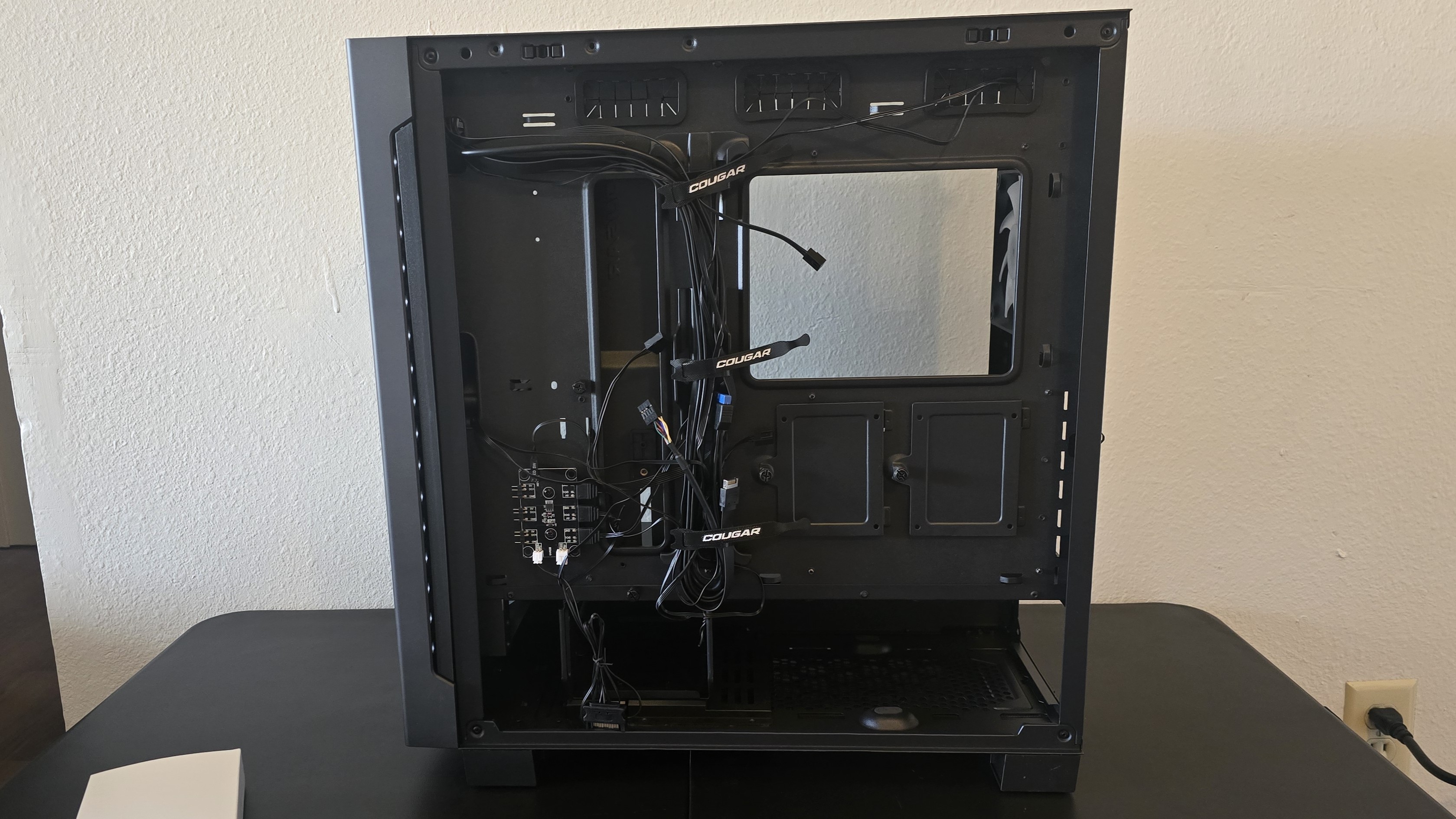
The back view isn’t quite as clean as I’d prefer, but does the job well enough. There are three cable ports on the top and a middle routing path with Velcro zip ties to keep things tidy. If you need more than that, six plastic zip ties are also included.
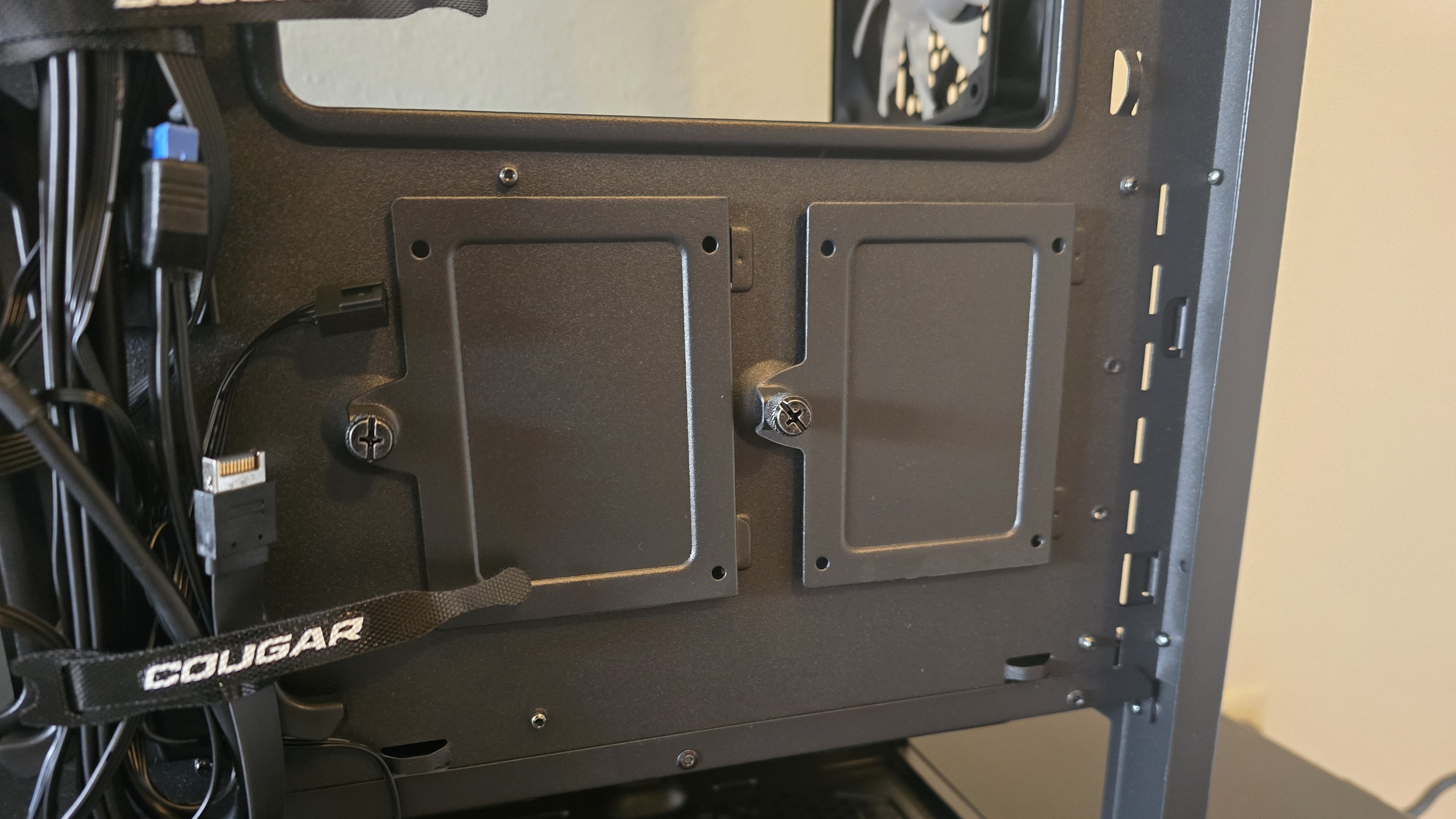
There is support for up to four storage drives in case. IThere are plates for 2x 2.5” drives (above) and a drive bay that supports two 3.5-inch drives (below) . The latter can be removed to create room for cable storage if desired.
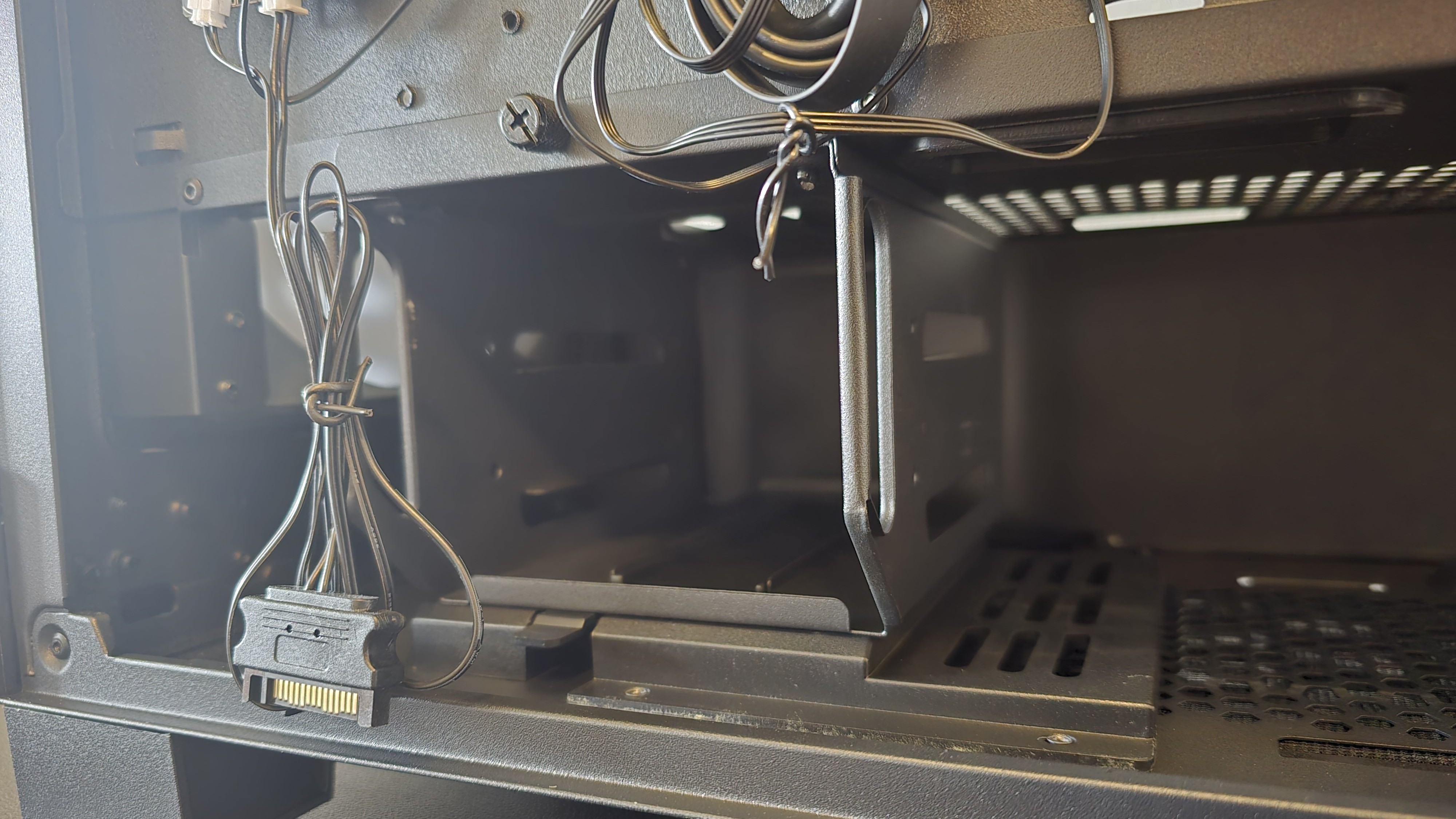
▶ Rear view
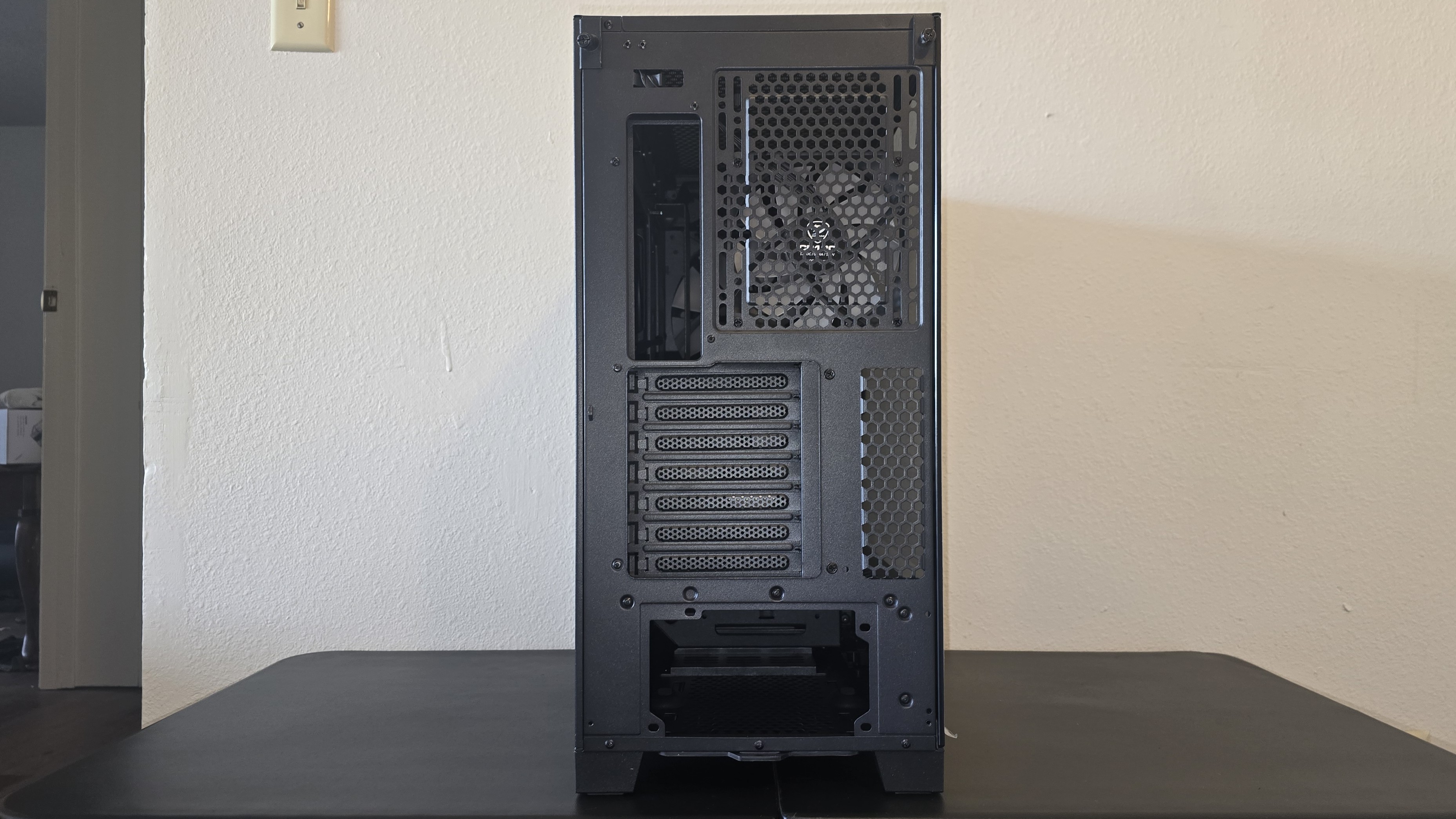
At first glance, you would think that the back of the case is no different from any other. After all, you have a spot for the exhaust fan at the top, seven PCI-e expansion slots in the middle, and the PSU at the bottom – not much different from normal, right?
If you look closely, you’ll see two screws to the right of the PCI-e slots. If you remove those, you’ll find that the PCI slots can be removed and rotated for vertical GPU support. Most cases that support vertical orientation have a lower number of slots, sometimes only three – but none are lost when using the Airface Eco in vertical orientation, ensuring compatibility with the largest of GPUs, no matter which orientation is preferred!

▶ Rear view
There’s also an ARGB hub, highlighted in blue in the photograph below, which can be used to universally control all ARGB devices in your computer case. It supports a total of six connections.
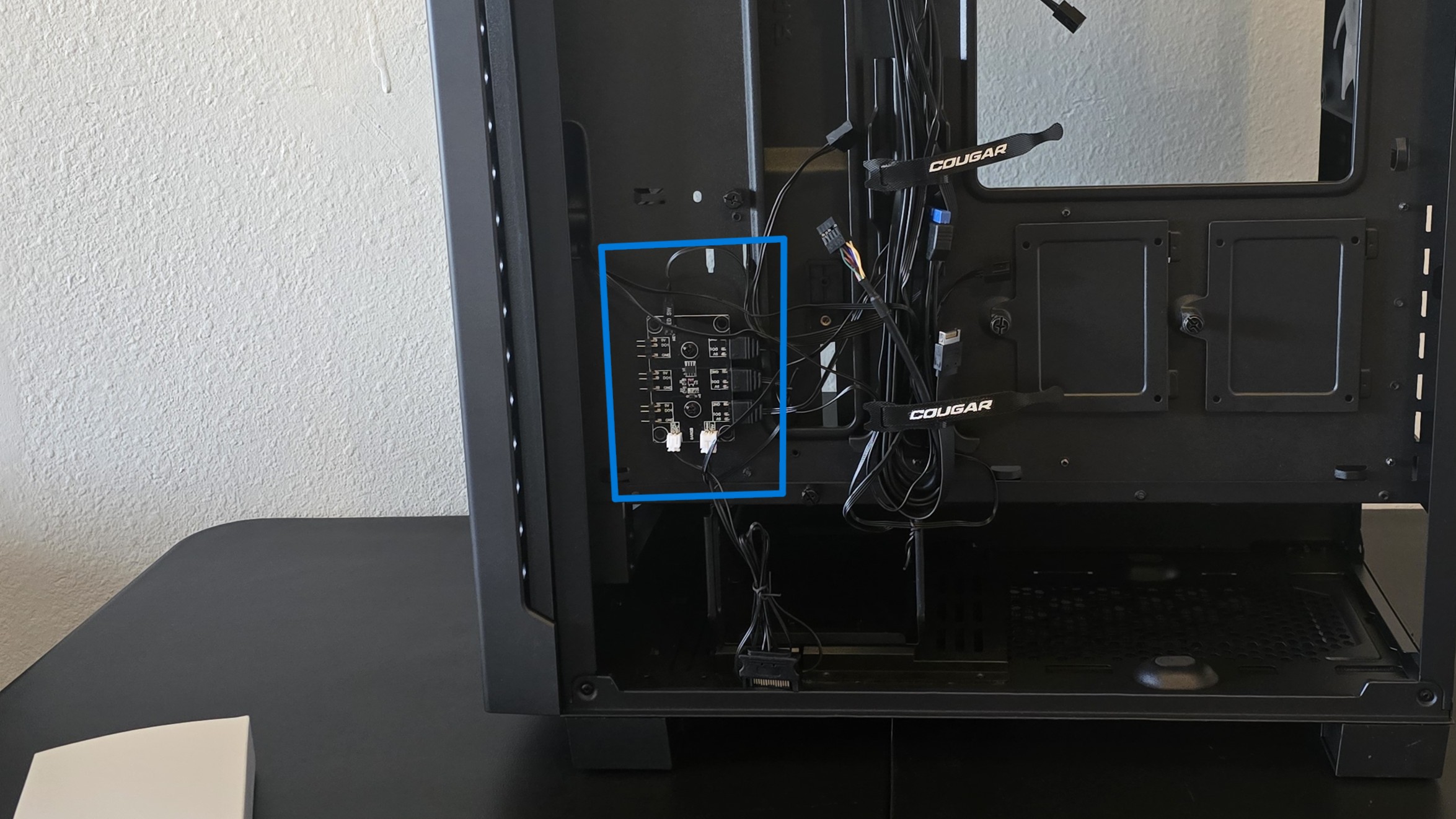
▶ Where’s the PWM hub?
There is one small complaint that I have about this case – there is no PWM hub for the case fans, nor is there an included splitter cable for the case fans. If you don’t have one of those parts available, each fan will need to be connected to your motherboard separately.
Thermal tests, test setup, and testing methodology
CPU | Intel i9-14900K |
CPU Cooler | Ocypus Iota A62 WH dual-tower cooler, configured with a single fan |
System fans | Default Pre-installed fans |
Motherboard | ASUS Z790-P Prime Wifi |
GPU | MSI RTX 4070Ti Super Ventus 3X OC |
PSU | ASUS TUF Gaming 850W |

Our thermal tests are presented to give you more information about the product’s performance, but aren’t intended as the sole judgment of the chassis. The style, price, features, and noise levels of a case should also be considered, and we all have different preferences. What I might like in a case, you might not, and that’s OK. My goal with these reviews is to give everyone, no matter their preferences, enough information to decide whether or not a product is right for them.
We’ve also started to add some tests using an AMD platform with a liquid cooler, to better examine how different factors can impact the thermal efficiency of a computer case.










